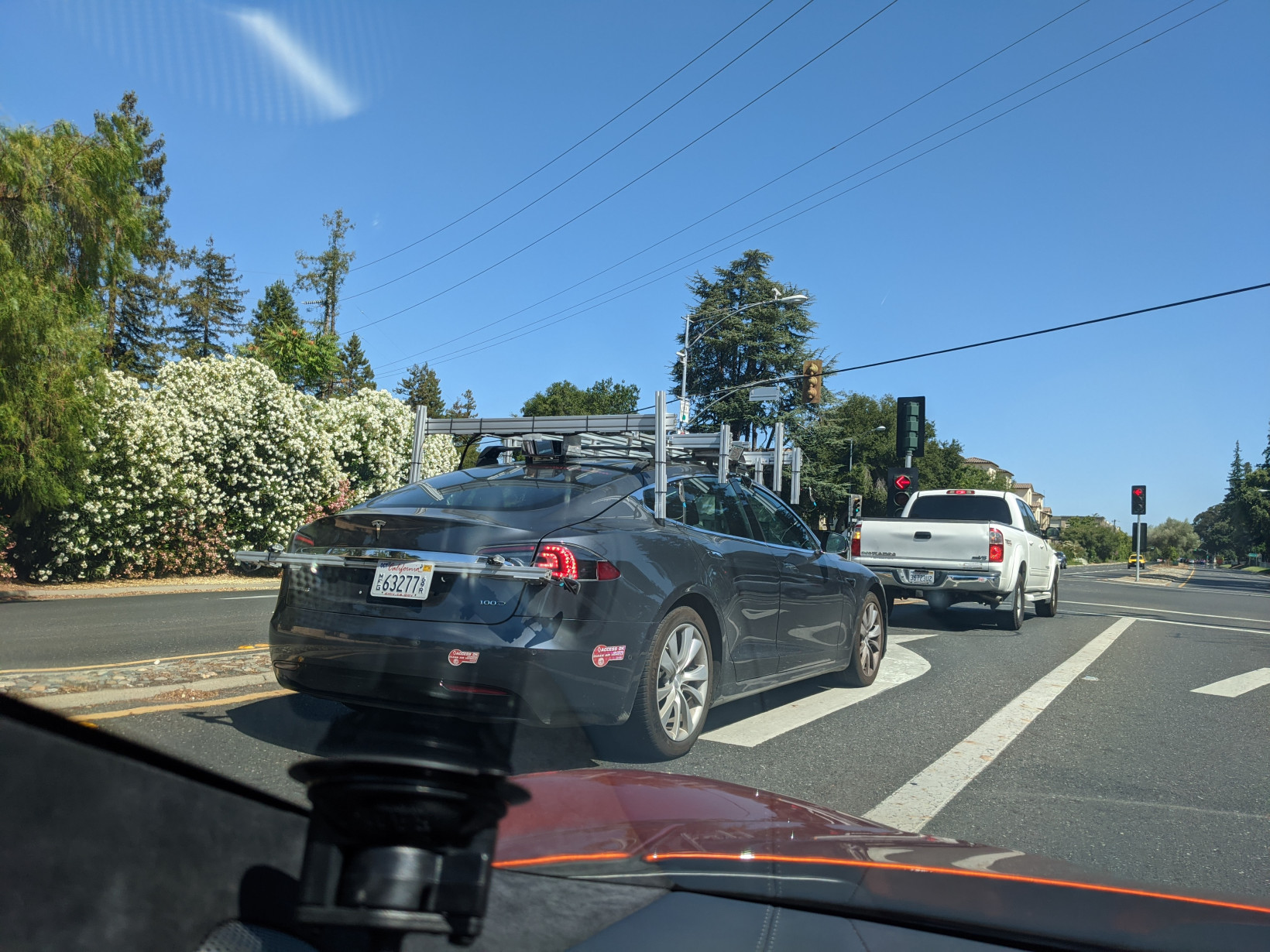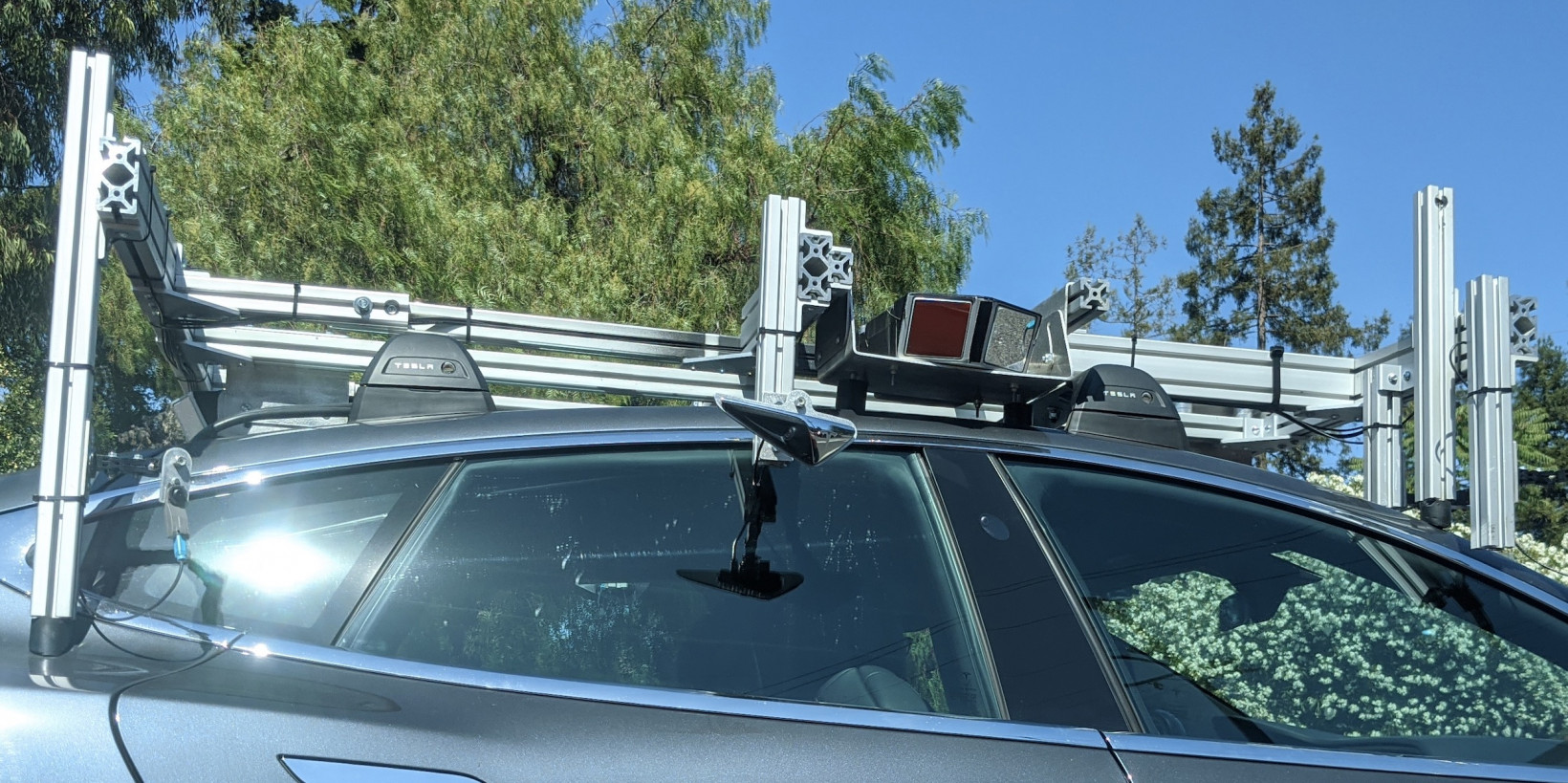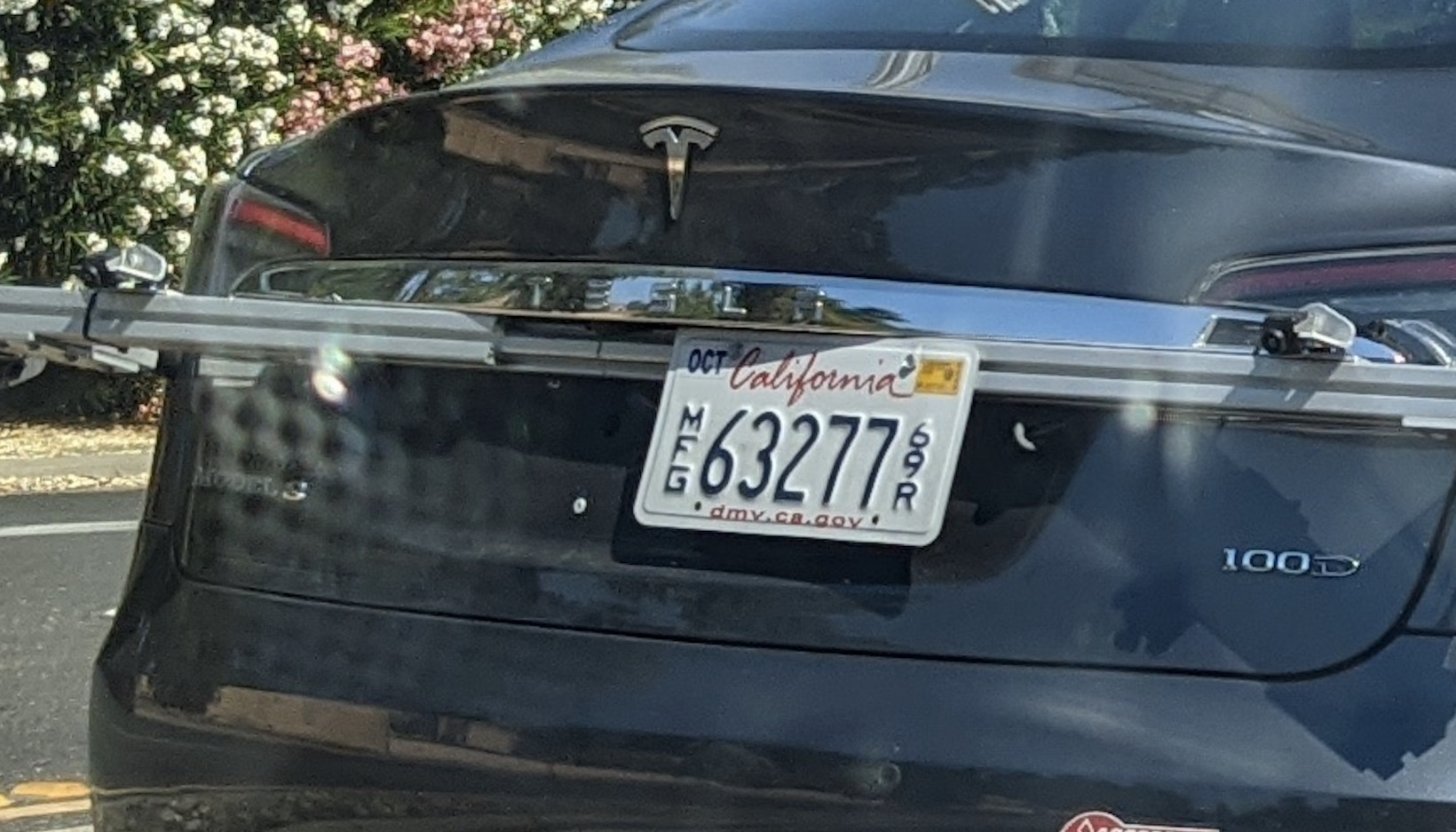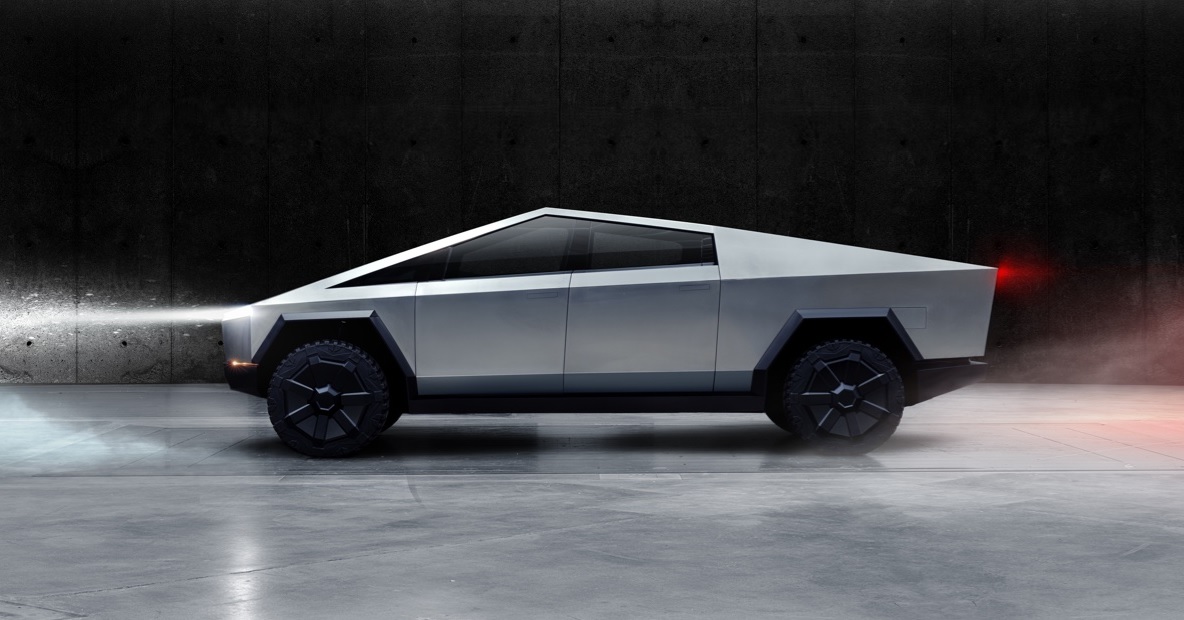Yesterday, Electrek reader Matt Crowley shared some snaps with the EV magazine of a Tesla Model S, that had a roof-mounted rig with a bunch of non-standard Tesla sensors on it — including what looks like LiDAR. But it’s unlikely that the company will introduce the tech to its vehicles — let me explain. [Read: This new radar lets cars see around corners]
The mystery sensor rig
One of the most interesting things with this sensor rig is the placement of Tesla’s conventional sensors. As can be seen in the image below, one of the rear-facing cameras, that’s normally on the rear quarter of the vehicle, has been mounted high up, above the rear passenger door. The tailgate also features two rear-facing cameras spaced quite far apart. Under the surface, it actually looks like Tesla is experimenting with changing the placements of its own camera sensors. As Electrek also pointed out, the high-mounted sensor could be testing a location that replicates where it will be on the upcoming Cybertruck. On the top of the vehicle are other sensors that have been reported to be LiDAR. Engineers from other industries, such as aerospace, have been critical of Tesla’s lack of LiDAR, and regularly cite the numerous Autopilot-related accidents as evidence that its technology is below par. Indeed, one thing Autopilot always seems to struggle with, is identifying vehicles that cross its path. This is believed to happen because cameras can’t sense depth of field or distance to the same level that LiDAR can. The solution seems simple, if you want to build a good autonomous vehicle, equip it with as many types of sensor as possible for redundancy and robustness. But there’s one problem with that: cost.
Tesla versus LiDAR
Musk has always been quite outspoken when it comes to LiDAR. At the company’s “autonomy day,” he said they’re costly, unnecessary, and a fool’s errand. Despite this, companies like Waymo and Uber — that are targeting high levels of human-less autonomy — all have elaborate LiDAR arrangements on the roofs of their vehicles to scan the road for moving objects to calculate how fast they’re moving and how far away they are. Waymo and Uber have made LiDAR sensors a central component of its self-driving tech — but they are incredibly expensive. When one Google engineer allegedly stole intellectual property about sensor tech from his employer, and took it to his new employer Uber, it led to a multi-million dollar lawsuit. That said, Waymo stated last year that through developing its own LiDAR, it’s managed to bring their cost down from the industry average of $75,000 to $7,500. While cost savings are usually always good, this is still too expensive to scale. If Tesla were to add even a cheap LiDAR arrangement to its Model S it could increase the cost of the vehicle by at least 10% in just hardware, that’s not including the cost of software development hours needed to put the hardware to work. It would have an even more dramatic impact on more affordable vehicles like the Model 3. What’s more, if Tesla all of a sudden added LiDAR to its new vehicles, what about the old ones? Would they get the tech retrofitted for an additional cost? Or would there be two types of Autopilot; one with LiDAR and the other without? Is adding LiDAR an admission that its regular sensors aren’t good enough? It could get confusing, and when things get confusing people lose interest. We know that Tesla is going all-in on self-driving tech and wants to bring it to as many people as possible. To achieve that, Tesla must stick to its course, offer the tech at an affordable price, and build consumer confidence. Adding LiDAR is unlikely to positively contribute to any of these things in the short term. Last year, researchers at Cornell University were able to validate the effectiveness of stereo camera setups against LiDAR. Their study showed that by taking a different approach to programming, the cameras can interpret objects with comparable accuracy to LiDAR. Over time, the gap is expected to continue to narrow. The most likely explanation here then is that Tesla is using LiDAR sensors to validate the effectiveness of its other sensors. It’s also likely that it’s experimenting with sensor placement for the Cybertruck. Given the improvements in camera tech and still prohibitive financial and development costs associated with LiDAR, don’t expect to see it on a Tesla anytime soon.



